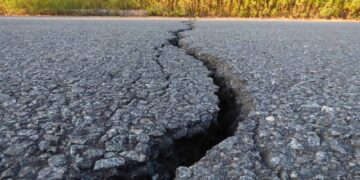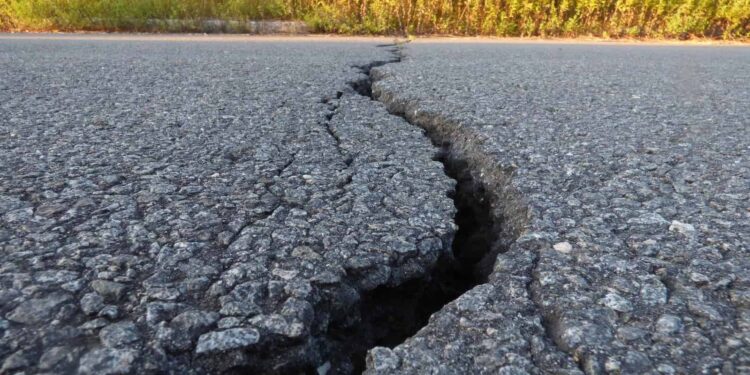By John Ikani
Earth tremors once have once again rattled several parts of Johannesburg, jolting residents who had barely recovered from the previous seismic event that struck the city mere weeks ago.
The latest tremor, which occurred around 18:47 on Saturday, sent shivers through communities like Krugersdorp on the West Rand and Soweto, further adding to the unease that has been lingering in the region.
Thankfully, there were no major incidents reported to their emergency call centre following the tremor, according to Joburg EMS spokesperson Robert Mulaudzi.
However, the event sparked concern and ignited conversations on social media as individuals shared their experiences of the sudden shaking that caught them off guard.
The Council for Geoscience (CGS) acted swiftly to validate the earthquake, and based on data from the South African National Seismograph Network (SANS), CGS specialists determined its local magnitude to be approximately 2.98.
Their analysis was based on recordings from the South African National Seismograph Network (SANS), with the epicentre identified 2 kilometres south of Harmony Doornkop Gold Mine, which lies to the south of Johannesburg.
The recent tremor measured lower on the magnitude scale compared to the previous one which saw buildings and infrastructure suffer damages, prompting safety checks and evaluations of structures across the city to avoid future risks.
Nonetheless, the latest seismic activity still caused minor disruptions and served as a stark reminder of the geological instability that plagues the region.
In the meantime, local authorities and disaster management teams are rallying the community to stay vigilant and well-prepared for any potential future tremors.
Quick facts about Earth tremors
• Earth tremors are caused by the movement of tectonic plates. The Earth’s crust is made up of several tectonic plates that are constantly moving. When these plates rub against each other, they can build up pressure. If the pressure gets too great, the plates can break, releasing energy in the form of seismic waves. These waves travel through the Earth, causing the ground to shake.
• Earth tremors can occur anywhere on Earth, but they are most common along the edges of tectonic plates. The Pacific Rim of Fire is a region that is home to many active volcanoes and earthquakes. This is because the Pacific plate is constantly moving against other plates, creating a lot of friction and pressure.
• The size of an earthquake is measured on the Richter scale. The Richter scale is a logarithmic scale, which means that each whole number increase on the scale represents a tenfold increase in ground shaking. For example, an earthquake with a magnitude of 7 is ten times stronger than an earthquake with a magnitude of 6.
• Earthquakes can cause a variety of damage, including structural damage to buildings, roads, and bridges. They can also cause landslides, tsunamis, and fires.
• There is no way to predict earthquakes with 100% accuracy. However, scientists can use seismometers to measure seismic activity and identify areas that are at risk of earthquakes. This information can be used to help people prepare for earthquakes and mitigate their impact.




































